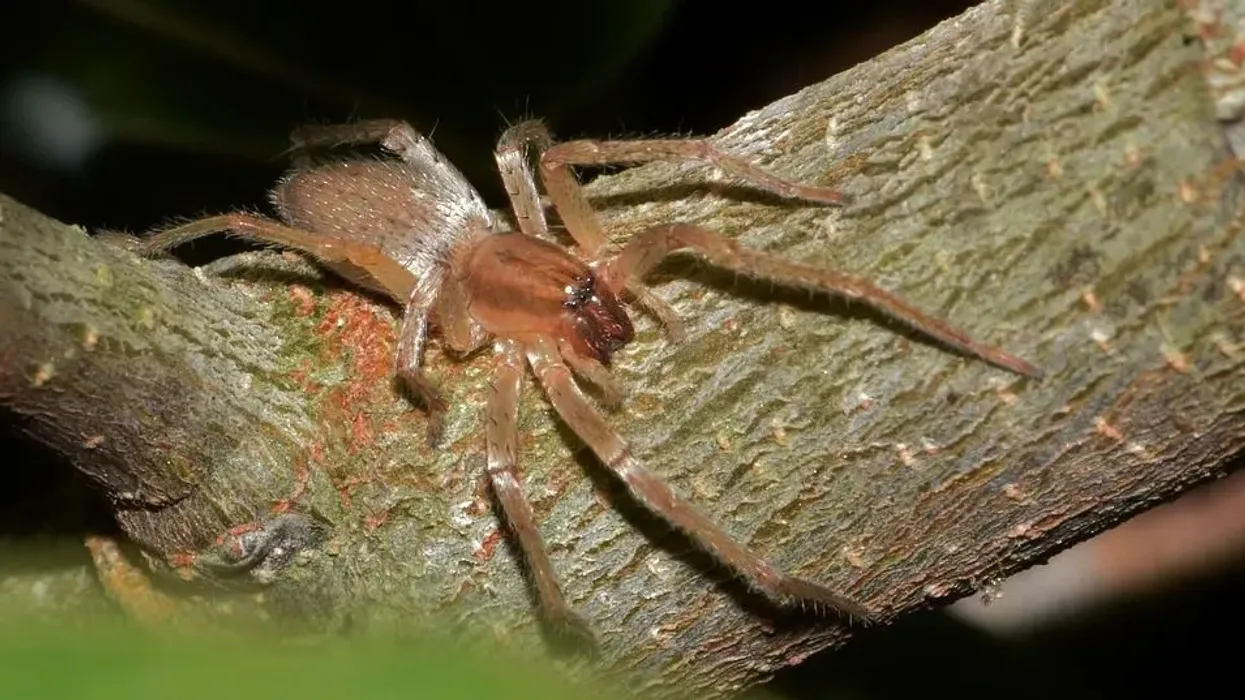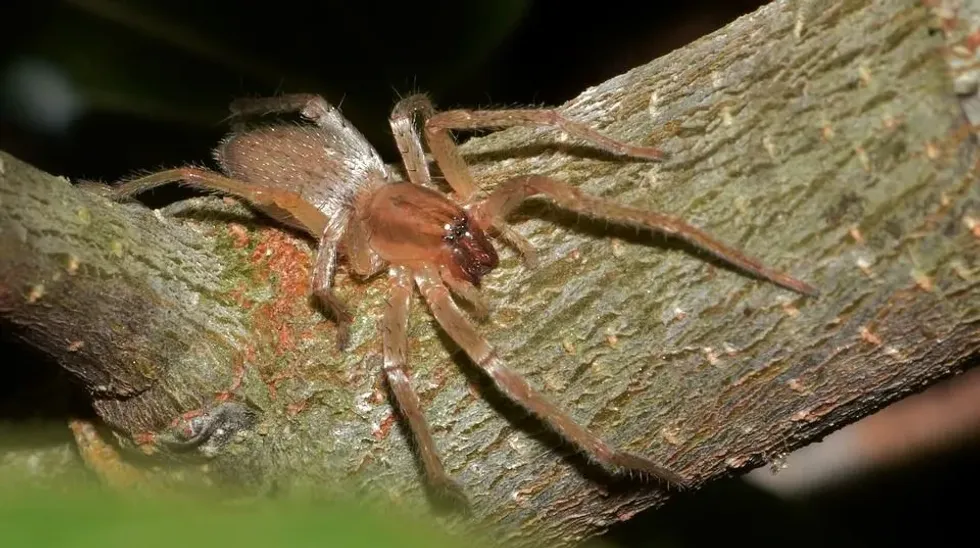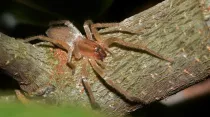Sac spiders are medium-sized spiders that are pale in color. Found largely in the regions of South Florida, Australia, North America, and the United States, they are venomous (their bites contain venom).
Their color may vary from yellowish-white to pale brown depending on the type of species. The yellow sac spider (C. inclusum) which is often confused with the brown recluse spider, for instance, is pale yellow in color.
The long-legged sac spider (Cheiracanthuim mildei) on the other hand is more brownish in color. Sac spiders may lay up to five egg sacs which contain 30-48 eggs.
Sac spiders do not form any web instead they make sacs of silk for resting during the day. A female sac spider is known to produce several egg masses in her lifetime.
A sac spider bite, especially a yellow sac spider bite, can cause mild to moderate pain but is not life-threatening. Females guard their eggs for 17 days until they hatch.
If you are fascinated by the yellow sac spiders, then you may want to read the following amazing facts like spider egg sac facts and yellow sac spider facts. If you want to learn more about different animals, you can read up on Yellow sac spider and Jumping Spider.
Sac Spider Interesting Facts
What type of animal is a Sac Spider?
The Sac spider is a type of spider with various other subspecies like the long-legged sac spider (Cheiracanthuim mildei), yellow sac spider (Cheiracanthium inclusum ), which is often confused with the brown recluse spider, and corinnid sac spiders, to name a few.
What class of animal does a Sac Spider belong to?
Sac spiders belong to the Arachnida class of animals.
How many Sac Spiders are there in the world?
Although the exact number of sac spiders is not exactly unknown, their population is widespread across the whole world. There are more than 530 species of sac spiders in the world.
Where does a Sac Spider live?
The habitat of sac spiders typically includes regions of North America, Australia, the United States, Africa, Argentina, South Florida, the lower mainland of British Columbia, and Canada.
What is a Sac Spider's habitat?
Sac spiders can be seen on the field and are mainly plant dwellers. Very often, they may also enter houses and buildings and can be found on the wall or ceiling corners.
Who do Sac Spiders live with?
Sac spiders in general are not social creatures and only come together during the season of mating.
How long does a Sac Spider live?
The average life span of sac spiders typically ranges from one to two years. Females live longer than males and few males may even die after mating.
How do they reproduce?
Sac spiders are nocturnal creatures who feed and mate at night. June and July are usually the time when the female sac spiders lay their eggs after 14 days of mating.
The eggs are usually covered with a thin coat of spun silk. By autumn the eggs are laid and by the spring, a new batch of spiderlings are born. Females have the ability to produce several egg masses containing multiple eggs throughout their lifetime.
The females display very protective behavior until the egg sacs are completely hatched. The egg sac helps to protect the egg from any form of danger.
What is their conservation status?
All species of the sac spiders are listed as Least Concern by the International Union for Conservation of Nature (IUCN). This means no species of this creature is endangered or in need of protection.
Sac Spider Fun Facts
What do Sac Spiders look like?

Sac spiders are spiders with eight eyes arranged in two rows. They make small cylindrical silk retreat sacs. The thorax of a long-legged sac spider (Cheiracanthuim mildei) is darker or more brown than its abdomen.
Most of them are reddish-brown in color, while others may have a more pale green or white shade with a black or dark mouthpiece. Their feet are darker in color than their body. The body of a sac spider is divided into two groups, cephalothorax (fusion of head and thorax) and abdomen.
How cute are they?
Sac spiders are cute, especially given their tiny size and their variant of colors of different species. However, they are equally dangerous and their bite contains venom which can cause pain to human beings. The best decision will be to keep as much distance from them as possible.
How do they communicate?
Sac spiders generally communicate with each other through the help of smell, taste, and touch. The yellow sac spider (C. inclusum) for instance has sensory structures which help them detect their environment and catch their prey.
They generally do not form any web, instead, they produce silken sacs where they rest during the day to go out for a hunt at night.
How big is a Sac Spider?
Sac spiders are medium-length spiders with a body length of 0.2-0.4 in (5-12 mm). Females are slightly larger in size than males.
How fast can a Sac Spider move?
Sac spiders can move very fast. Yellow sac spiders (C. inclusum) can move at a speed of 2 mph (3 km). Since they do not form webs, they have to run fast to be able to catch and hunt down on their prey.
How much does a Sac Spider weigh?
The average weight of a sac spider is typically 0.000008 lb (3.8 mg), almost negligible.
What are their male and female names of the species?
There is no specific name for males and females of this species.
What would you call a baby Sac Spider?
A baby sac spider is called a spiderling.
What do they eat?
Sac spiders are known to be very aggressive hunters. They feed on insects or any type of invertebrates that they can find in their neighborhood. They mainly hunt at night when they hunt their prey by grabbing and biting them.
Are they poisonous?
Yes, sac spiders are poisonous and their bites contain venom. A bite from a sac spider can kill cells and cause tissue breakdown and blistering in the area of the bite.
Although the bites are painful and can leave scars, they are not life-threatening for humans. No news of death from the bite of a yellow sac spider has yet been registered.
Would they make a good pet?
No, sac spiders are not ideal to be kept as pets. They are venomous and can cause pain to their victim.
Although yellow sac spiders are not naturally aggressive, when they feel threatened, they won't hesitate to bite the person. Their bites are not life-threatening but due to the venom present in their bite, it can cause blisters and pain which will last for days.
Did you know...
Sac spiders derive their name from the sac that they produce for resting. They do not make a web and a single sac spider can produce multiple sacs at a time. Therefore, by looking at the number of sacs, it is often difficult to estimate the number of sac spiders present in the house.
Most sac spiders hunt at night. During the night, they form a bridge made of silky thread which they use to move from one place to another.
Long-legged sac spiders are also known to eat other types of spiders.
Different types of Sac Spider
The most common type of sac spiders found is the yellow sac spider (Cheiracanthium inclusum), long-legged sac spider (Cheiracanthium mildei), and the corinnid sac spider which belongs to the family of Corinnidae.
The yellow sac spider (C. inclusum) belongs to the family of Miturgidae and can be found in regions of the United States, Mexico, Africa, and some parts of South America.
They are generally pale yellow in color, from where they derive their name. The long-legged spider, too, belongs to the family of Miturgidae and can be found in the United States, regions of Virginia and California.
The corinnid sac spiders are wandering predators and build sacs of silk for the retreat which can be found between leaves or under rocks.
Sac Spiders and humans
Sac spiders and humans do not mix well. Their bites are venomous and can cause pain and blisters.
The sac spider bite can turn the skin red, usually accompanied by mild swelling.
If bitten by a sac spider, the first thing one needs to do is to put ice on the place where the spider has bitten. If the pain intensifies or persists for a long period of time, then consulting a physician is necessary.
Although their bites are not life-threatening, maintaining distance from them would be the wise thing to do. Since sac spiders generally build their sacs in dark areas, one can easily locate them in the corners of their ceilings.
One of the best methods to get rid of long-legged sac spiders or other sac spiders is by closing any possible hole or crack which might serve as an entrance for them. Another way is to remove any clutter where these sac spiders may seek harbor.
You should not kill a yellow sac spider, out of fear, instead, let it pass.
They attack only when they feel threatened and therefore one should not indulge in behavior that might cause the sac spider to attack. Bleach is considered to be the safest technique to get rid of spider egg sacs in your home.
Here at Kidadl, we have carefully created lots of interesting family-friendly animal facts for everyone to discover! Learn more about some other arthropods including six-eyed sand spider, or orb-weaver spider.
You can even occupy yourself at home by drawing one on our sac spider coloring pages.








